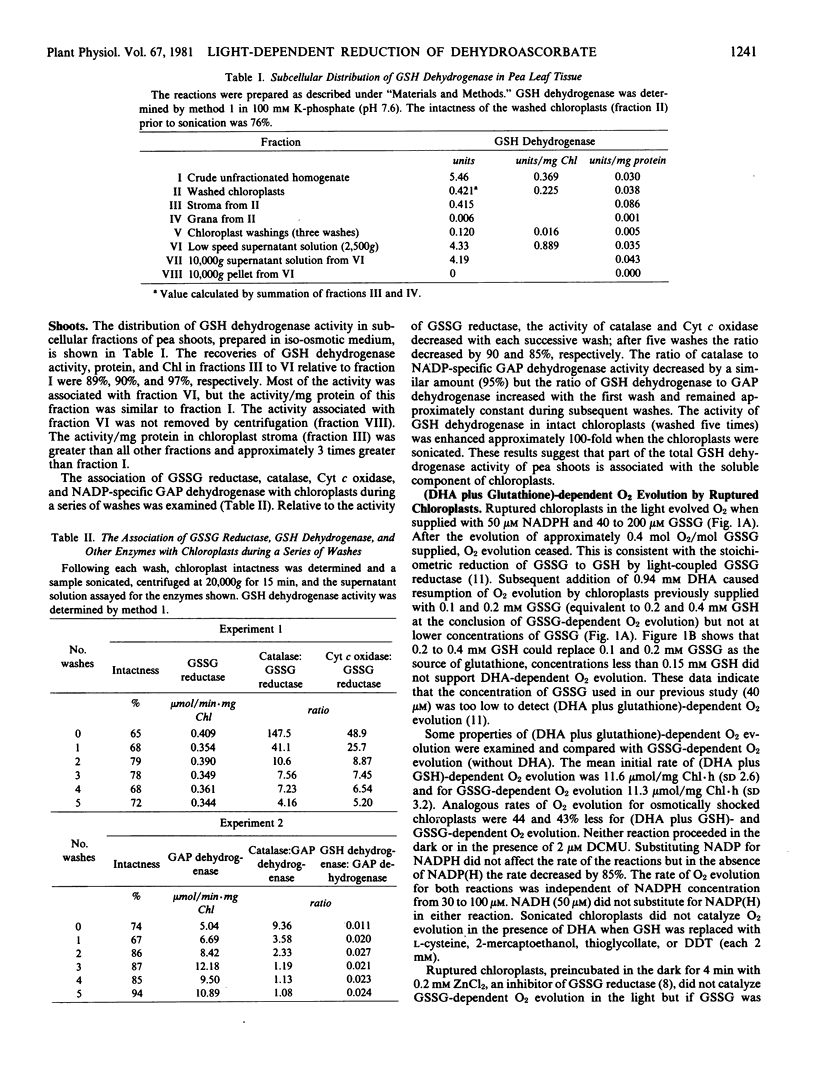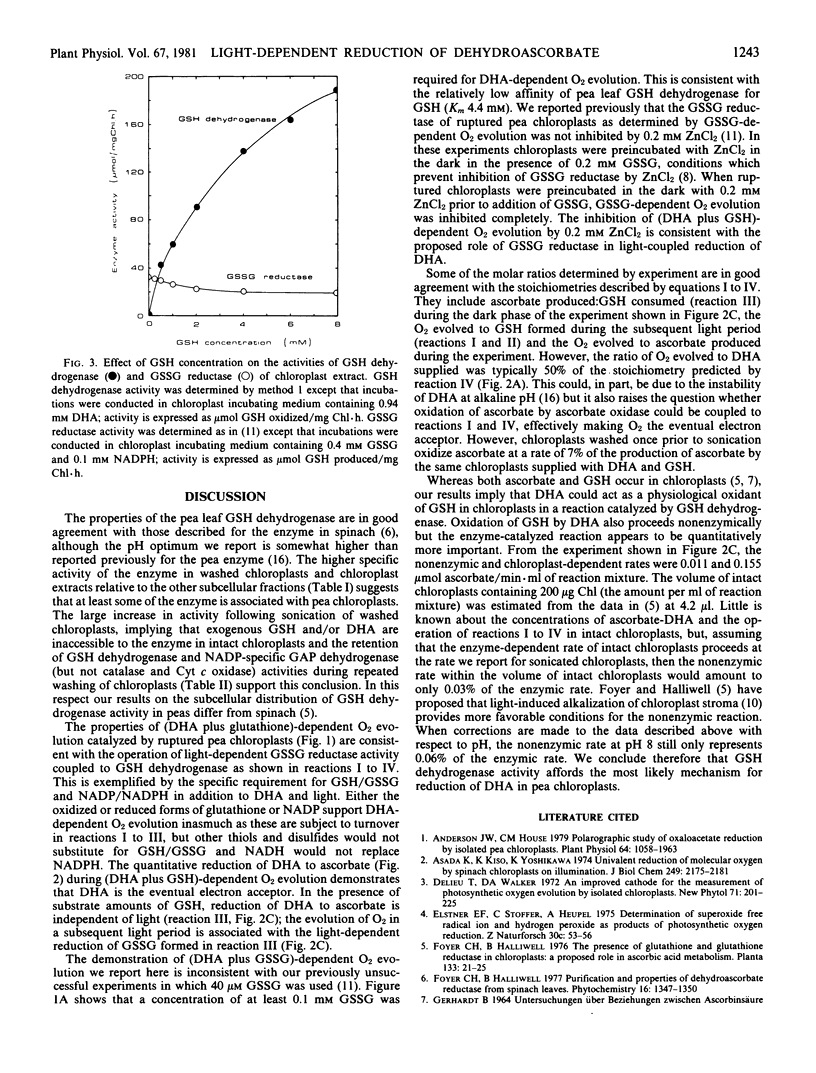Abstract
Glutathione dehydrogenase (EC 1.8.5.1) was partially purified from pea shoots. The pH optimum was 7.6. The Km values for GSH and dehydroascorbate were 4.4 and 0.44 millimolar, respectively. The enzyme was inhibited by iodoacetate and CuSO4 but not significantly by ZnCl2 or NaN3. Part of the total enzyme activity was associated with isolated chloroplasts.
Illuminated ruptured chloroplasts, in the presence of 50 micromolar NADP(H) and substrate concentrations of GSH or GSSG, catalyzed (dehydroascorbate plus glutathione)-dependent O2 evolution with the concomitant reduction of dehydroascorbate to ascorbate. Oxidation of ascorbate by ascorbate oxidase activity associated with the chloroplasts was relatively insignificant. ZnCl2 inhibited (dehydroascorbate plus glutathione)-dependent O2 evolution but not ascorbate formation. The reaction was attributed to light-dependent reduction of GSSG (involving glutathione reductase) coupled to the reduction of dehydroascorbate (involving glutathione dehydrogenase). Light-dependent reduction of GSSG appears to be the rate-limiting step in this reaction sequence at physiological concentrations of GSH.
Full text
PDF





Selected References
These references are in PubMed. This may not be the complete list of references from this article.
- Anderson J. W., House C. M. Polarographic study of oxaloacetate reduction by isolated pea chloroplasts. Plant Physiol. 1979 Dec;64(6):1058–1063. doi: 10.1104/pp.64.6.1058. [DOI] [PMC free article] [PubMed] [Google Scholar]
- Asada K., Kiso K., Yoshikawa K. Univalent reduction of molecular oxygen by spinach chloroplasts on illumination. J Biol Chem. 1974 Apr 10;249(7):2175–2181. [PubMed] [Google Scholar]
- Heber U., Pon N. G., Heber M. Localization of Carboxydismutase & Triosephosphate Dehydrogenases in Chloroplasts. Plant Physiol. 1963 May;38(3):355–360. doi: 10.1104/pp.38.3.355. [DOI] [PMC free article] [PubMed] [Google Scholar]
- Heldt W. H., Werdan K., Milovancev M., Geller G. Alkalization of the chloroplast stroma caused by light-dependent proton flux into the thylakoid space. Biochim Biophys Acta. 1973 Aug 31;314(2):224–241. doi: 10.1016/0005-2728(73)90137-0. [DOI] [PubMed] [Google Scholar]
- Jablonski P. P., Anderson J. W. Light-dependent Reduction of Oxidized Glutathione by Ruptured Chloroplasts. Plant Physiol. 1978 Feb;61(2):221–225. doi: 10.1104/pp.61.2.221. [DOI] [PMC free article] [PubMed] [Google Scholar]
- MASSEY V. The microestimation of succinate and the extinction coefficient of cytochrome c. Biochim Biophys Acta. 1959 Jul;34:255–256. doi: 10.1016/0006-3002(59)90259-8. [DOI] [PubMed] [Google Scholar]
- SIMON E. W. The effect of digitonin on the cytochrome c oxidase activity of plant mitochondria. Biochem J. 1958 May;69(1):67–74. doi: 10.1042/bj0690067. [DOI] [PMC free article] [PubMed] [Google Scholar]
- Strothkamp R. E., Dawson C. R. A spectroscopic and kinetic investigation of anion binding to ascorbate oxidase. Biochemistry. 1977 May 3;16(9):1926–1929. doi: 10.1021/bi00628a026. [DOI] [PubMed] [Google Scholar]
- YAMAGUCHI M., JOSLYN M. A. Purification and properties of dehydroascorbic acid reductase of peas (Pisum sativum). Arch Biochem Biophys. 1952 Jul;38:451–465. doi: 10.1016/0003-9861(52)90051-9. [DOI] [PubMed] [Google Scholar]


